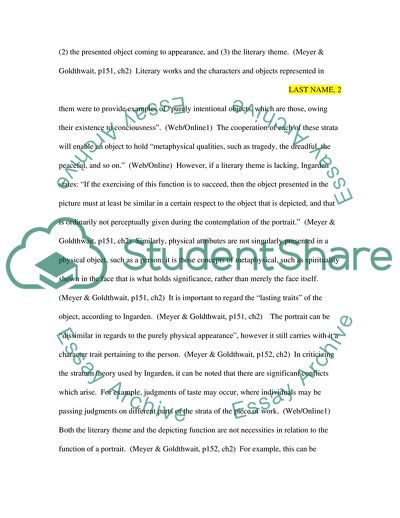Cite this document
(The Ontology of the Work of Art Assignment Example | Topics and Well Written Essays - 2250 words, n.d.)
The Ontology of the Work of Art Assignment Example | Topics and Well Written Essays - 2250 words. Retrieved from https://studentshare.org/performing-arts/1703004-expository-essay-in-phenomenology-on-roman-ingardens-the-ontology-of-the-work-of-art-the-picture-pages-137-216
The Ontology of the Work of Art Assignment Example | Topics and Well Written Essays - 2250 words. Retrieved from https://studentshare.org/performing-arts/1703004-expository-essay-in-phenomenology-on-roman-ingardens-the-ontology-of-the-work-of-art-the-picture-pages-137-216
(The Ontology of the Work of Art Assignment Example | Topics and Well Written Essays - 2250 Words)
The Ontology of the Work of Art Assignment Example | Topics and Well Written Essays - 2250 Words. https://studentshare.org/performing-arts/1703004-expository-essay-in-phenomenology-on-roman-ingardens-the-ontology-of-the-work-of-art-the-picture-pages-137-216.
The Ontology of the Work of Art Assignment Example | Topics and Well Written Essays - 2250 Words. https://studentshare.org/performing-arts/1703004-expository-essay-in-phenomenology-on-roman-ingardens-the-ontology-of-the-work-of-art-the-picture-pages-137-216.
“The Ontology of the Work of Art Assignment Example | Topics and Well Written Essays - 2250 Words”. https://studentshare.org/performing-arts/1703004-expository-essay-in-phenomenology-on-roman-ingardens-the-ontology-of-the-work-of-art-the-picture-pages-137-216.


